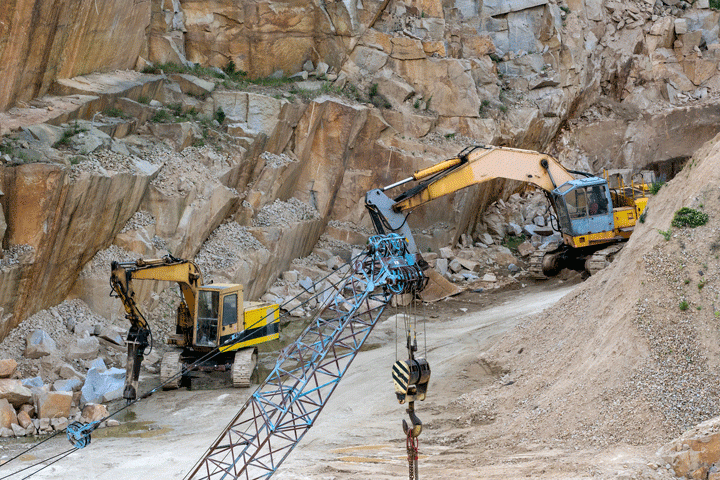Travelling With Granite Quarries in South Africa: A Visual Odyssey
Travelling With Granite Quarries in South Africa: A Visual Odyssey
Blog Article
Introducing the Mysteries of Granite Quarrying: Where Stamina and Sophistication Meet
The world of granite quarrying is a realm where the raw stamina of nature converges with human artistry to create frameworks that stand the examination of time with an air of sophistication. From the depths of quarries to the precise sprucing up in workshops, the procedure of changing granite into building marvels is a complicated dancing of tradition and advancement. As we peer right into the depths of this ancient craft, we start to reveal the covert ins and outs that form the really essence of our developed environment.
The Origins of Granite Quarrying
In the record of architectural history, the origins of granite quarrying are shrouded in a tapestry of ancient craftsmanship and geological wonders. Dating back to old Egypt and Mesopotamia, the removal of granite from quarries marked the start of a trip that would eventually lead to the development of some of the world's most iconic structures.
Granite quarrying's roots can be traced to the experienced artisans who recognized the stone's sturdiness and aesthetic charm. With a combination of primitive tools and sheer determination, these very early quarry employees uncovered granite blocks that would certainly come to be the structure blocks of people.
As human beings advanced, so did the strategies of quarrying granite. The Romans, renowned for their design prowess, developed advanced approaches for removing granite to create monoliths, temples, and roads that stood the test of time.
The heritage of these old quarrying methods continues to shape modern-day design, with granite staying a symbol of strength and elegance in construction tasks around the world. (granite quarries in south africa)
Devices of the Quarrying Profession
The advancement of granite quarrying methods from ancient civilizations to modern-day times highlights the essential function played by the tools of the quarrying profession in forming the industry's techniques. In old times, quarrying tools were basic, often containing blades, hammers, and wedges made from products like bronze or iron. These tools required substantial manpower and time to remove granite blocks from quarries.

Furthermore, the introduction of pneumatic tools and high-powered machinery has considerably decreased the physical labor needed in quarrying operations, improving worker security and productivity. As the quarrying sector proceeds to introduce, the devices of the trade remain at the forefront of driving progress and forming the future of granite removal.
Drawing Out Blocks of Granite
Making use of precision machinery and progressed methods, the extraction of granite obstructs from quarries has become an innovative process in the modern-day quarrying sector. Controlled blasting techniques are after that employed to damage apart the granite into workable sections.

Sprucing Up and Completing Techniques
To achieve a remarkable surface on granite blocks, skilled craftsmens utilize a series of meticulous sprucing up and ending up techniques. After the initial removal and shaping procedures, the granite blocks undergo a thorough sprucing up phase to boost their natural appeal and sturdiness. One usual approach utilized in polishing granite is diamond abrasion, where commercial diamonds are made use of to grind and polish the rock to a smooth finish. This procedure not just produces a glossy surface yet likewise guarantees harmony in color and structure throughout the granite block.
In addition to sprucing up, ending up techniques are put on additional refine the granite's appearance. These strategies may include flaming, refining, or cleaning, each offering unique appearances and coatings to fit various aesthetic choices. Flaming, as an example, involves subjecting the granite surface to high temperature levels to develop a rough, textured finish, suitable for outside applications where slip-resistance is crucial. Honing, on the various other hand, provides a matte finish that is smooth to the touch, perfect for indoor counter tops and flooring. By very carefully choosing and using these brightening and ending up strategies, craftsmens can change raw granite obstructs right into charming items that display both stamina and sophistication. view it

Ecological Effect and Sustainability
With the growing focus on ecological consciousness in the sector, granite quarrying practices are significantly scrutinized for their influence on natural sources and long-term sustainability. Quarrying for granite can have considerable ecological effects. The extraction process frequently includes using heavy visit this site equipment, explosives, and big quantities of water, leading to habitat devastation, dirt erosion, and water contamination. In addition, the transport of granite from quarries to processing centers generates carbon emissions, additionally adding to ecological degradation. granite quarries in south africa.
To alleviate these influences and make certain sustainability in granite quarrying, industry stakeholders are adopting various steps. Executing sophisticated innovations to minimize power intake and water use, redeeming quarried land for eco-friendly reconstruction, and advertising accountable sourcing methods are some methods being utilized. Accreditations such as the Woodland Stewardship Council (FSC) and the Leadership in Power and Environmental Layout (LEED) aid customers identify environmentally friendly granite items.
Conclusion
Finally, granite quarrying is a procedure that requires specialized devices and methods to remove blocks of granite and polish them to a high level of surface. While the environmental influence of quarrying can be significant, initiatives are being made to enhance sustainability techniques in the market. Overall, granite quarrying is a fragile balance in between utilizing the toughness and beauty of this all-natural stone while decreasing its effect on the environment.
Report this page